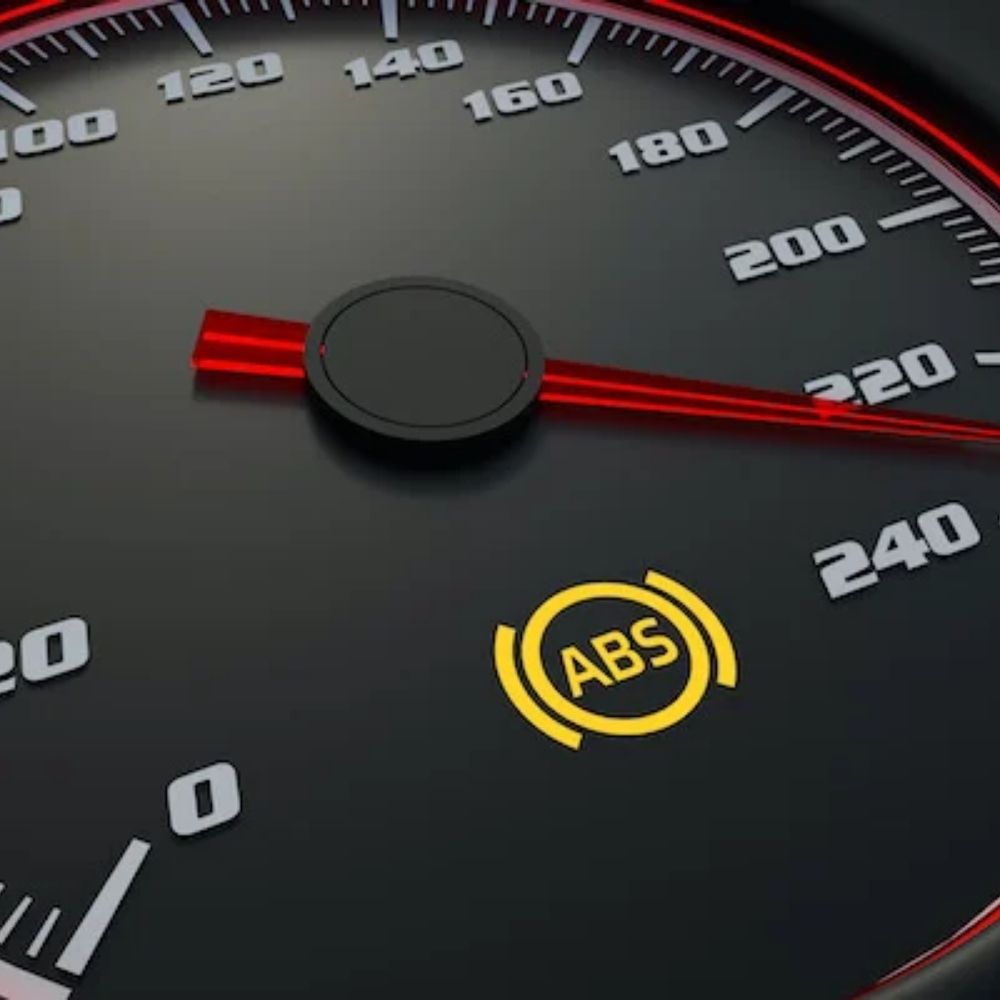
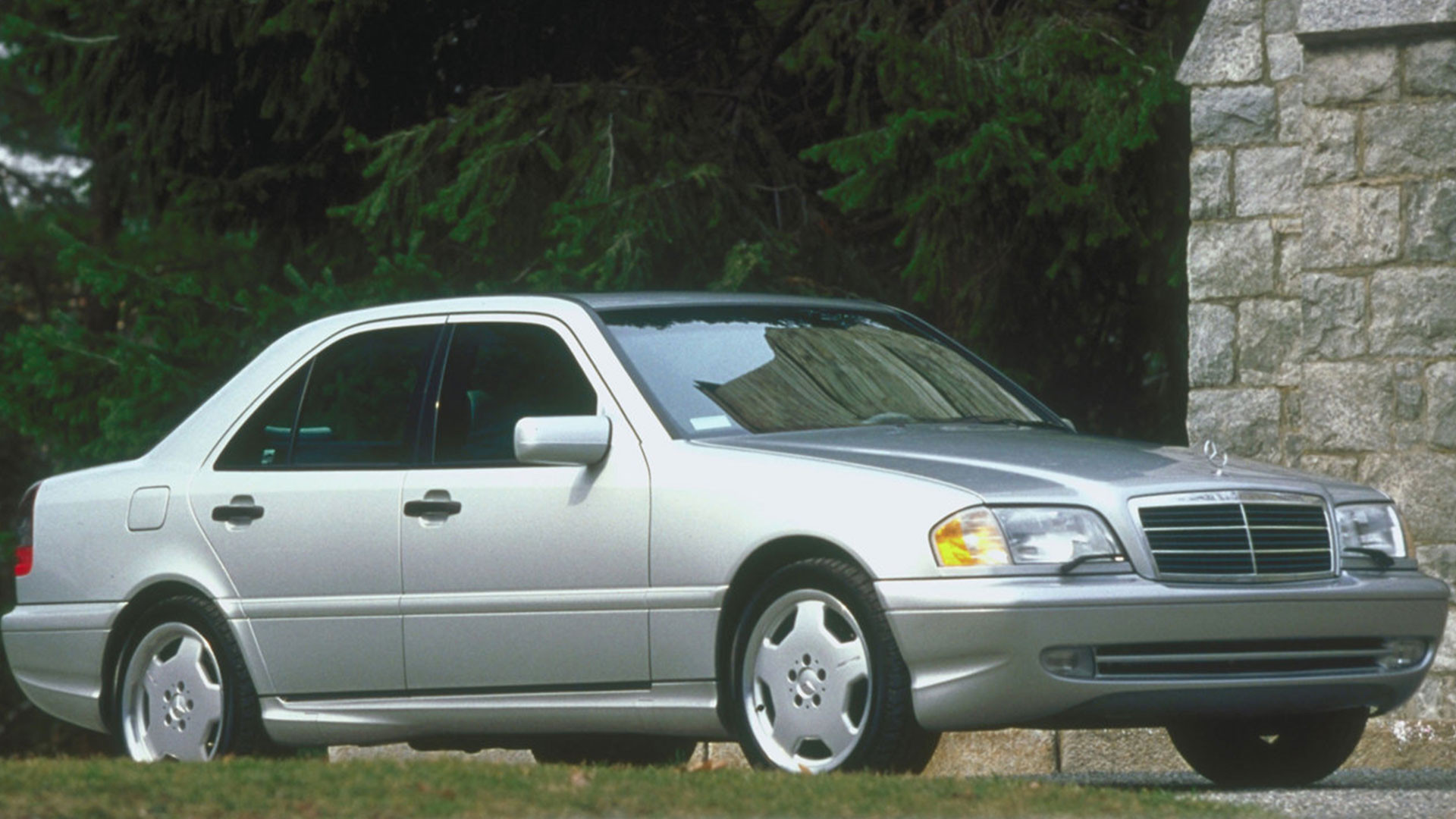
Mercedes Model Codes List: The Ultimate Guide
Contents
- 1. Understanding Mercedes-Benz Chassis Code Prefixes
- 2. C-Class Model Codes: Mercedes’ Compact Line
- 2.1. W201 (1984-1993): The Pioneer
- 2.2. W202 (1994-2000): The First C-Class
- 2.3. W/C/S 203 (2001-2007): Versatility Defined
- 2.4. W/C 204 (2008-2014): Modern Expansion
- 2.5. W/C 205 (2015-2021): Leaps in Design
- 3. E-Class Model Codes: Mercedes’ Sedan Standard
- 3.1. W/C 114/115 (1968-1976): The Reliable Luxury Image
- 3.2. W/S/C 123 (1977-1985): The Quintessential “Old Benz”
- 3.3. W/S/C/A 124 (1986-1995): Gateway to E-Class
- 3.4. W/S 210 (1996-2002): The “E” Model Name
- 3.5. W/S 211 (2003-2009): Performance and Utility
- 3.6. W/S 212 (2010-2016): Cutting-Edge Technology
- 3.7. W213 (2017-Current): The Latest Iteration
- 4. S-Class Model Codes: Mercedes’ Flagship Line
- 4.1. W/V/C/A 108/109 (1965-1973): The Second Half
- 4.2. W/V 116 (1973-1980): The “S” Nomenclature
- 4.3. W/V/C 126 (1980-1991): The Well-Known Benz
- 4.4. W/V/C 140 (1992-1999): The Best S-Class
- 4.5. W/V 220 (2000-2006): A Black Sheep
- 4.6. W/V 221 (2007-2013): More Refinement
- 4.7. W/V 222 (2014-2020): Return to Form
- 4.8. W 223 (2020-Current): Increased Utility
- 5. CL-Class Model Codes: Coupe Version of S-Class
- 5.1. C107 (1972-1982): The Original SLC
- 5.2. C126 (1981-1991): The SEC
- 5.3. C140 (1993-1999): The First to Bear the CL Nomenclature
- 5.4. C215 (2000-2006): The CL Name Across Production
- 5.5. C216 (2007-2014): Openly S-Class-Based
- 5.6. C217 (2015-2021): The Coupe Variant
- 6. CLS-Class Model Codes: Four-Door Coupe Based on E-Class
- 6.1. W219 (2006-2011): Blueprint on a W211-Chassis
- 6.2. W218 (2012-2018): Moves Backward Numerically
- 6.3. W257 (2018-Current): Hybrid-Assist EQ System
- 7. G-Class Model Codes: Offroad Military Vehicle Adapted for Civilian Use
- 7.1. W 463 (US Market) (2002-Current): Stayed Relevant
- 8. M-Class/GLE-Class Model Codes: First Dedicated Sport-Utility Vehicle
- 8.1. W163 (1998-2005): Robust Components
- 8.2. W164 (2006-2011): Expanded Upon It
- 8.3. W166 (2012-2018): Up to Modern Standards
- 8.4. W167 (2019-Current): New Powerplants
- 9. GL-Class/GLS-Class Model Codes: Extended Wheelbase M-Class
- 9.1. X164 (2007-2012): More Space and Comfort
- 9.2. X166 (2012-2019): Packing a Bit More of a Punch
- 9.3. X167 (2020-Current): Swells a Bit in Size
- 10. R-Class Model Codes
- 10.1. V251 (2006-2012): Foray into the MPV Segment
- 11. GLK-Class/GLC-Class Model Codes
- 11.1. X204 (2010-2015): The Original Entry
- 11.2. X/C 253 (2016-2021): Dropped the GLK Nomenclature
- 11.3. X/C 254 (Current): Improve Occupant Experience
- 12. CLK-Class Model Codes
- 12.1. W/A 208 (1998-2002): “CL-Class” for the E-Class
- 12.2. W/A 209 (2003-2009): Two-Door Pillarless Model
- 12.3. C/A 207 (2010-2017): Coupe Variant of the W212
- 12.4. C/A 238 (2018-Current): Pillarless Design Retained
- 13. SLK-Class Model Codes: Mercedes’ First Small Roadster
- 13.1. R170 (1998-2004): Innovator for All Convertibles
- 13.2. R171 (2005-2011): Expanded Upon the Fun
- 13.3. R172 (2012-2020): Continued the Spirit
- 14. SL-Class Model Codes
- 14.1. W113 (1963-1971): The “Pagoda”
- 14.2. R107 (1972-1989): One of the Most Classically-Beautiful
- 14.3. R129 (1990-2002): Builds Largely Off of the Legendary W140
- 14.4. R230 (2003-2012): A Touchy Subject
- 14.5. R231 (2013-2021): Brings the Aging R230 Up to Date
- 14.6. R232 (2022-Current): Takes a New Approach
- 15. CLA-Class Model Codes
- 15.1. C117 (2013-2018): Not Entry-Level
- 16. GLA-Class Model Codes
- 16.1. X156 (2015-2018): Effectively a Trial Run
- 17. MFA2 Platform
- 18. Need Expert Help With Mercedes Model Codes?
- 19. FAQ: Mercedes Model Codes
Mercedes Model Codes List can be confusing, but AutoExplain.com simplifies it, providing you with a comprehensive understanding of Mercedes-Benz chassis codes, model designations, and their unique attributes, ensuring accurate diagnostics and efficient repairs. We empower technicians with expert knowledge and remote support.
1. Understanding Mercedes-Benz Chassis Code Prefixes
Mercedes-Benz uses a system of prefixes to denote the body style and wheelbase of their vehicles. Knowing these prefixes is the first step in decoding the model code.
- W: The most common prefix, used for short-wheelbase sedans and SUVs.
- V: Indicates long-wheelbase sedans, primarily used for S-Class models.
- R: Denotes two-seater roadsters like the SL and SLK.
- C: Used for coupes with a fixed hardtop.
- S: Signifies station wagons, typically E-Class models.
- A: Represents cabriolet cars.
- X: Indicates SUVs designed from an already-existing platform.
2. C-Class Model Codes: Mercedes’ Compact Line
2.1. W201 (1984-1993): The Pioneer
The W201, represented by the 190E and 190D, was a structurally vital model for Mercedes in the US. These models were known for their quaint interiors, elegant exterior, robust build quality, and reliable engine options, like the iconic 190E Cosworth, which solidified Mercedes’ presence in DTM racing.
 Mercedes-Benz-C-Class
Mercedes-Benz-C-Class
2.2. W202 (1994-2000): The First C-Class
The W202 was the first to officially use the C-Class name. It retained the key attributes of the W201 with an updated package, offering a clean exterior, comfortable interior, and reliable engine. The W202 included the M111 supercharged inline-four and rare AMG models like the C36 and C43.
2.3. W/C/S 203 (2001-2007): Versatility Defined
The W203 C-Class aimed to target a broad audience in an entry-level format. It was available as a coupe, sedan, or wagon. Engine options included supercharged four-cylinders, V6 variants, and AMG models like the C32 (supercharged V6) and C55 (V8).
2.4. W/C 204 (2008-2014): Modern Expansion
The W204 C-Class moved towards a more modern marketplace with increased dimensions for more cabin space and a wider exterior. Engine options included the M272 V6, the M276 towards the end of production, and a turbocharged version of the M271 four-cylinder (M271 EVO). The AMG-tuned C63 featured the M156 V8.
2.5. W/C 205 (2015-2021): Leaps in Design
The W205 C-Class features fully direct-injected engines and turbocharged models. It moved slightly upmarket with the introduction of the CLA-Class to maintain the entry-level bracket.
3. E-Class Model Codes: Mercedes’ Sedan Standard
3.1. W/C 114/115 (1968-1976): The Reliable Luxury Image
The W/C 114/115 models, available as a sedan (W) or coupe (C), were pivotal in creating the image of reliable luxury that Mercedes is known for. With bold, straight-line styling, these luxury tourers combined elegance with reliability, outliving comparable cars in the US market. Engine options ranged from four-cylinder diesel and gas models to a straight-six gas engine, including the OM617 inline-five diesel.
3.2. W/S/C 123 (1977-1985): The Quintessential “Old Benz”
The W123-chassis is what many in the US picture when thinking of an “old Benz”. These models shared design elements with the W114/115 but had updated styling. The W123 models provided luxurious interiors, a relaxed ride, and dependable powerplants. Chassis codes easily identified body styles (W for sedan, S for wagon, C for coupe). Badging indicated engine displacement, with “T” for wagon and “C” for coupe, followed by “D” for diesel or “E” for fuel-injection (“Einspritzung”).
3.3. W/S/C/A 124 (1986-1995): Gateway to E-Class
The W124-chassis served as the gateway to the E-Class designation, adopting the nomenclature in 1993. While the exterior was noticeably newer, the underlying layers remained consistent. Buyers could opt for a wagon (S124), sedan (W124), coupe (C124), or cabriolet (A124) model. The W124 boasted stylish interiors and comfortable seats. S124 models also used a hydropneumatic rear suspension. Powertrains included the OM603 diesel-six, M103 and M104 inline-sixes, and the AMG-tuned M119 V8 in the 500E. Some W124s also introduced the 4MATIC all-wheel-drive system.
3.4. W/S 210 (1996-2002): The “E” Model Name
The W210 E-Class was the first to bear the “E” model name throughout its production cycle. While build quality was less robust, the mantra remained the same: strong powerplants, a plush ride, and a comfortable interior. The M112 V6 served as an entry-level engine, and the M113 V8 worked well in the E430 and AMG-tweaked E55 models. Diesel options included the OM606. The W210 E-Class also introduced 4MATIC all-wheel drive on a broad scale. The “S” prefix noted wagon models, while the “W” chassis prefix acknowledged the sedan.
3.5. W/S 211 (2003-2009): Performance and Utility
The W211 E-Class brought both performance and utility at a reasonable price point. Available as a sedan or wagon, engines ranged from the OM642 and 648 diesel six-cylinders to the M112 and M272 V6s, and the M113 and M273 V8s. 4MATIC and rear-driven models were available, and brake-by-wire was used for the first time alongside the R230 model. The E55 AMG produced significant power via the supercharged M113K, and late in production, the M156 of the E63 provided similar power in a naturally-aspirated format. The AIRMATIC suspension design was also made mainstream on the W211 models.
3.6. W/S 212 (2010-2016): Cutting-Edge Technology
The W212 E-Class brought technology to the forefront, offering features like driver drowsiness detection and lane departure warning. Engine options ranged from the M271 EVO to the M274. The W212 saw a mid-cycle facelift in 2013, resulting in significant powertrain variations. The M276 V6 was introduced, available in its Biturbo trim in the E400 model. Four V8s were available: the M273 in earlier E550s, the M156 in the early E63, the Biturbo M278 (Late E550), and the AMG-tinkered M157 in the late E63. The W212-chassis emphasized direct-injection and fuel economy, and made rear-drive and 4MATIC driveline options standard across most engine offerings. Coupe variants, branded as E-Class models, had a chassis notation of “C207,” linking them to the CLK models.
3.7. W213 (2017-Current): The Latest Iteration
As the latest iteration of the mid-range sedan, the W213 E-Class brings cutting-edge technology, including a semi-autonomous driving system and safety features like “Active Brake Assist” and “Evasive Steering Assist.” Lower-displacement variants received the M274 turbo-four, while mid-range models received the M276 Biturbo V6. A hybrid model was available via the E350e, as well as paired with the M256 inline-6 for the E53 AMG 4MATIC+ model. The E63 AMG is motivated by the 4.0L Biturbo V8.
4. S-Class Model Codes: Mercedes’ Flagship Line
4.1. W/V/C/A 108/109 (1965-1973): The Second Half
The W108 and W109-chassis are derivatives of the W111 and W112 “Fintail” model, with the W108 and W109 being the long-wheelbase four-door models and the W114 and W115 being shorter wheelbase two-door examples. The 108 designation refers to a standard wheelbase, while the 109 notes a lengthened wheelbase and the debut of air suspension. Three different inline-6 engines were available. The 6.3L M100 V8 was introduced for the limited-production 1967 300SEL 6.3. The “Second Series” facelift incorporated more modernization of the available six-cylinder powerplants as well as the introduction of the 3.5 M116 V8 and 4.5 M117 V8. Many Mercedes fans consider this generation to be the greatest Mercedes ever produced.
4.2. W/V 116 (1973-1980): The “S” Nomenclature
The W116 was the first to bear the “S” nomenclature. 280 “S” and “SE” models received the M110 inline-6, 350 “SE” and “SEL” models received the M116 3.5 V8, 450 “SE” and “SEL” models the M117 4.5 V8, and the 450SEL 6.9 received the 6.9L M100 V8. Hydropneumatic self-leveling rear suspension was introduced for the 450SEL 6.9. A diesel model was available late in production with the 300SD, an OM617-powered unit.
4.3. W/V/C 126 (1980-1991): The Well-Known Benz
The W126 platform is perhaps the most well-known older Benz to the general public. In the United States, the W126-chassis could be had in either a sedan or a pillarless two-door coupe. The Coupe had both a shorter wheelbase and one less seat in the rear than the sedan. This chassis was based upon the W116 and saw both diesel and gas powertrains. Engines ranged from a gas inline-6 to 5 and 6 cylinder diesels, to a host of V8 engines. The W126 offered both a passenger airbag and an early form of traction control. Models were noted mainly by nomenclature, with “SEL” for the long-wheelbase sedan and “SEC” for the coupe variants.
4.4. W/V/C 140 (1992-1999): The Best S-Class
The W140 is widely regarded as the best S-Class of all time, featuring strong-but-reliable engines, robust build quality, and ingenuity in simplicity. As early as 1995, this chassis offered parking assist and a stability program. The ride was sublime even without the optional active damping package. Engines ranged from the OM603 diesel to the M104 inline-six, to the M119 V8, and the M120 6.0L V12. A coupe and sedan style were offered, and nomenclature remained the same as the W126 until the middle of production, when the chassis prefix flipped to being presented ahead of engine displacement, so models such as the 500SEL became the S500.
4.5. W/V 220 (2000-2006): A Black Sheep
The W220 was a bit of a black sheep in the Mercedes model range, as build quality suffered. AIRMATIC suspension was introduced broad-scale. AMG models were available in large-scale, with the S55 and its M113K V8 as well as the S65 and its M275 Biturbo V12. Interior build quality was also lacking. Engines ranged from a few basic V6s to different iterations of the M113 V8, up to varying-displacement-and-aspiration V12s.
4.6. W/V 221 (2007-2013): More Refinement
The W221 S-Class expanded on the platform of the W220, aiming to add refinement. The wheelbase and overall size swelled, enhancing cabin and cruising comfort. The optional Distronic Plus system gained more capability, and “Pre-Safe” served as a new safety feature. AIRMATIC remained standard, with ABC remaining standard on the S600, S63, and S65.
4.7. W/V 222 (2014-2020): Return to Form
The W222 S-Class served as a return-to-form, providing all-new technology and body styles. A coupe option was available under chassis code C217 and a convertible of that model was available in the A217 chassis. Hybrid powertrains were used, increasing fuel efficiency and torque while decreasing noise. “Magic Body Control” was introduced as a replacement for SBC. All power plants available pack the torque to move the hefty W222 with low-RPM elegance, and range from Biturbo sixes to Biturbo V8s, to the Biturbo V12 in the S65 AMG.
4.8. W 223 (2020-Current): Increased Utility
The W223 S-Class promotes increased utility, using a 48v mild-hybrid system across most models to increase torque and efficiency. This electric powertrain could be had hooked up to an M256 inline-6 at base level in the S500, the M176 Biturbo V8 at a higher level in the S580 (or, a plug-in hybrid system paired with the M256 in the S580e). AMG models in the form of the S63e and S73e are looking sharp and statistically should be good for around 800 horsepower via a hybrid driveline.
5. CL-Class Model Codes: Coupe Version of S-Class
5.1. C107 (1972-1982): The Original SLC
The original CL-Class can be attributed to the original SLC models of the 70s, stemming from increased safety scrutiny surrounding convertible models. The SLC Class was a solid-roof take on the SL-class. The body was stretched slightly to accommodate rear seats. The M116 and M117 V8 drivelines, supple suspension and nimble chassis became a racing classic abroad.
5.2. C126 (1981-1991): The SEC
The C126, commonly referred to as the SEC, was a coupe version of the same-generation S-Class. Build quality was equally robust.
5.3. C140 (1993-1999): The First to Bear the CL Nomenclature
The C140-chassis was based off of the W140, and was noted as the S-Class coupe for 1993 through 1997 and eventually as the CL-Class for 1998-1999.
5.4. C215 (2000-2006): The CL Name Across Production
The C215 was the first to hold the CL-Class name across all of production. Based off of the W220, the swooping two-door coupes still have a ton of road presence today. At a base level, the C215 saw the M113 V8, and received the M113K in an AMG model as well as both naturally-aspirated and Biturbo V12s. The C215 was plagued with some of the same suspension woes owners of the W220 remain bitter about, though interior quality was a slight step ahead of the sedan counterpart.
5.5. C216 (2007-2014): Openly S-Class-Based
The C216 CL-Class was perhaps the most openly S-Class-based example of the CL, appearing essentially as a massive, swooping two-door on the long S-class wheelbase.
5.6. C217 (2015-2021): The Coupe Variant
The C217 drops the CL nomenclature and exists as the Coupe variant for the W222-chassis S-Class. This model abandons the original zeitgeist of the CL in the option of an A217-chassis convertible.
6. CLS-Class Model Codes: Four-Door Coupe Based on E-Class
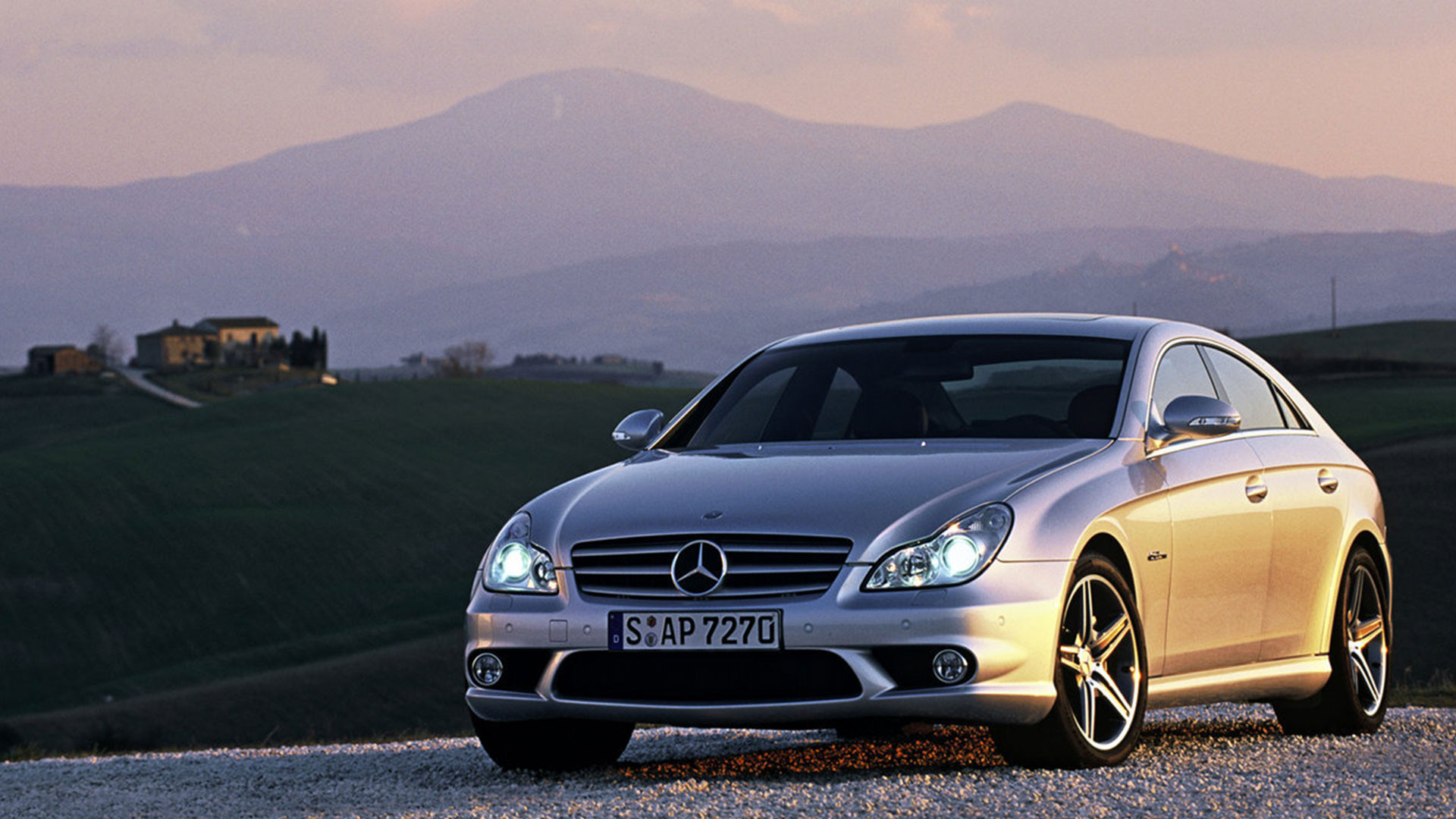 Mercedes-Benz-CLS63-AMG
Mercedes-Benz-CLS63-AMG
6.1. W219 (2006-2011): Blueprint on a W211-Chassis
These CLS models were blueprinted on a stiffened W211-Chassis, but offered 2+2 seating. Powerplants were most heavily V8-based via an M113K AMG unit as well as an M273 in the CLS550.
6.2. W218 (2012-2018): Moves Backward Numerically
The next CLS chassis moves backward numerically. This iteration of the CLS-Chassis again used the E-Class chassis as a foundation, adding luxury and comfort to the W212-chassis E-Class. The M278 4.7L Biturbo V8 as well as the M157 Biturbo 5.5 V8 could be had in this chassis.
6.3. W257 (2018-Current): Hybrid-Assist EQ System
The latest iteration of the CLS again uses the E-Class chassis as a starting point, though the classic 2+2 seating trademark of the chassis is ditched in favor of a third seatbelt added in the rear. All-new for the W257 is a hybrid-assist EQ system and the return to a straight-six powerplant in the form of the M256.
7. G-Class Model Codes: Offroad Military Vehicle Adapted for Civilian Use
7.1. W 463 (US Market) (2002-Current): Stayed Relevant
The Gelandewagen has been a staple of the Mercedes brand for decades. The W463-chassis has stayed relevant both through its bold styling and through timely updates and refreshes.
8. M-Class/GLE-Class Model Codes: First Dedicated Sport-Utility Vehicle
8.1. W163 (1998-2005): Robust Components
The first-generation M-Class was heralded for robust components and a reliable driveline. The W163-chassis received some negative marks for exterior build quality but was generally beloved by owners.
8.2. W164 (2006-2011): Expanded Upon It
The W164 took the successful blueprint of the W163 and switched from a body-on-frame design to a unibody for increased comfort and highway performance. Styling was also improved and build quality standards were brought up to par.
8.3. W166 (2012-2018): Up to Modern Standards
The W166 took the outgoing W164 and brought it up to modern standards, adding technological improvements. The W166 began its production as the latest iteration of the M-Class, and in 2016 saw the trademark name dropped in favor of the “GLE-Class” as part of a mid-cycle refresh.
8.4. W167 (2019-Current): New Powerplants
The latest iteration of the GLE-Class improves on the outgoing W166 with two powerplants new to the chassis, the M264 four-cylinder and the M256 inline-six. Expanding the capability of the chassis is a seven-seat option.
9. GL-Class/GLS-Class Model Codes: Extended Wheelbase M-Class
9.1. X164 (2007-2012): More Space and Comfort
The X164 Chassis takes the proven W164 M-Class and adds more space and more comfort, leaning heavily on AIRMATIC suspension. A diesel option was also available with the OM642 Biturbo V6 powerplant.
9.2. X166 (2012-2019): Packing a Bit More of a Punch
The X166 follows its elder by packing a bit more of a punch, utilizing a host of Mercedes’ latest Biturbo powerplants to manage the size of the chassis. An Off-Road package was also made available.
9.3. X167 (2020-Current): Swells a Bit in Size
The X167 iteration of the chassis again swells a bit in size, gaining in wheelbase dimensions as well as overall width. MBUX comfort and entertainment functions are integrated, and both front and second-row seats can be had with heating, ventilation, and massaging features. The second and third rows are electrically-powered.
10. R-Class Model Codes
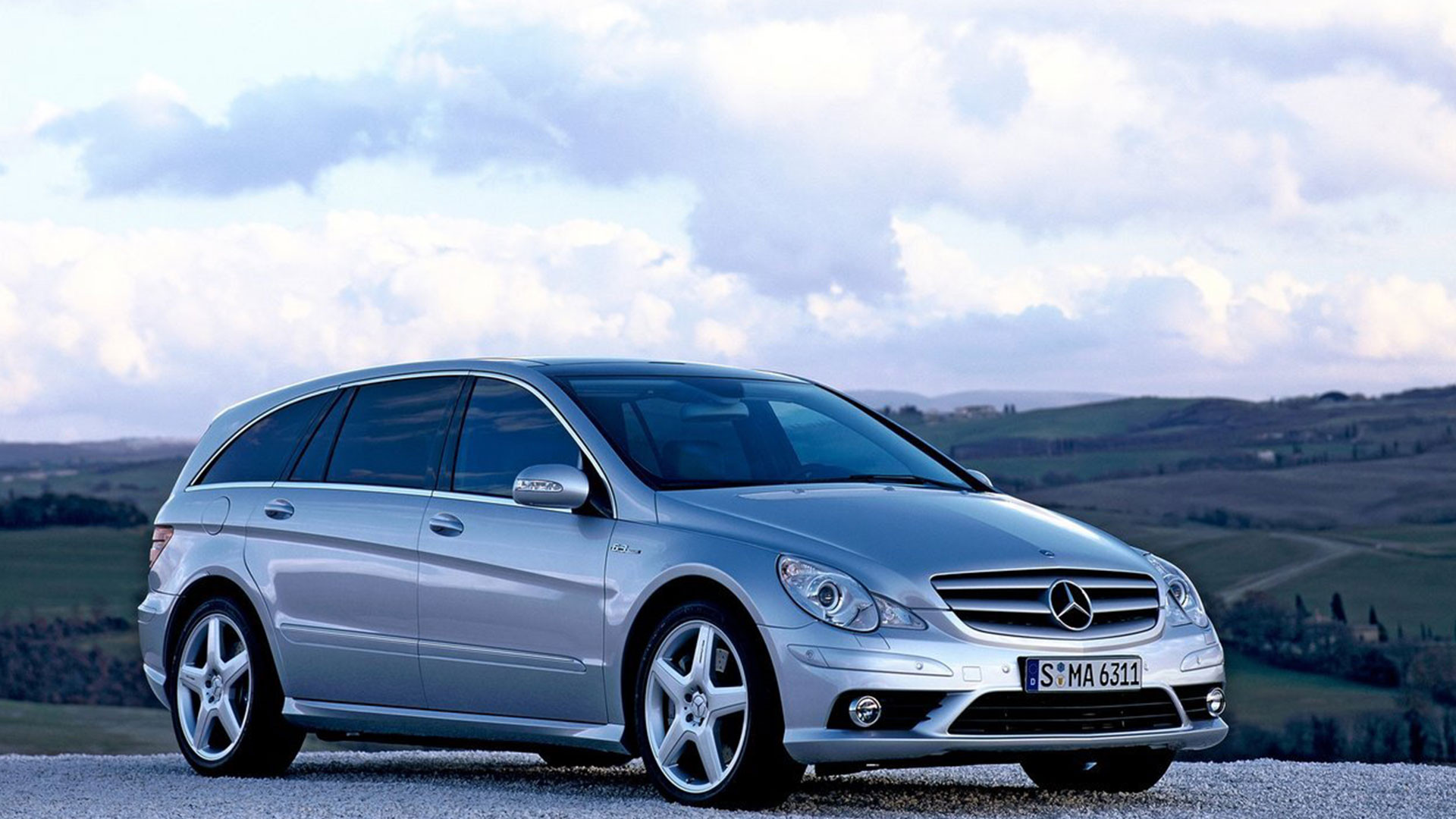 Mercedes-Benz-R63-AMG
Mercedes-Benz-R63-AMG
10.1. V251 (2006-2012): Foray into the MPV Segment
The R-Class was a foray into the MPV segment, adding the trademark luxury of the brand to a low-slung, long-wheelbase tourer. The V251 received some robust powerplants; a diesel variant and M113 V8 model were available, and buyers could purchase the V251 with the AMG-tinkered M156 V8 in the R63 AMG model.
11. GLK-Class/GLC-Class Model Codes
11.1. X204 (2010-2015): The Original Entry
Serving as the original Mercedes entry into the crossover market, the GLK-Class served as a handsome small utility effort.
11.2. X/C 253 (2016-2021): Dropped the GLK Nomenclature
The X253 chassis dropped the GLK nomenclature for 2016 in favor of the GLC-class, which serves most effectively as the C-Class of the SUV range offered by Mercedes.
11.3. X/C 254 (Current): Improve Occupant Experience
The X254 and associated C254 Coupe variants follow the success of the outgoing GLC-class and make small changes to improve occupant experience.
12. CLK-Class Model Codes
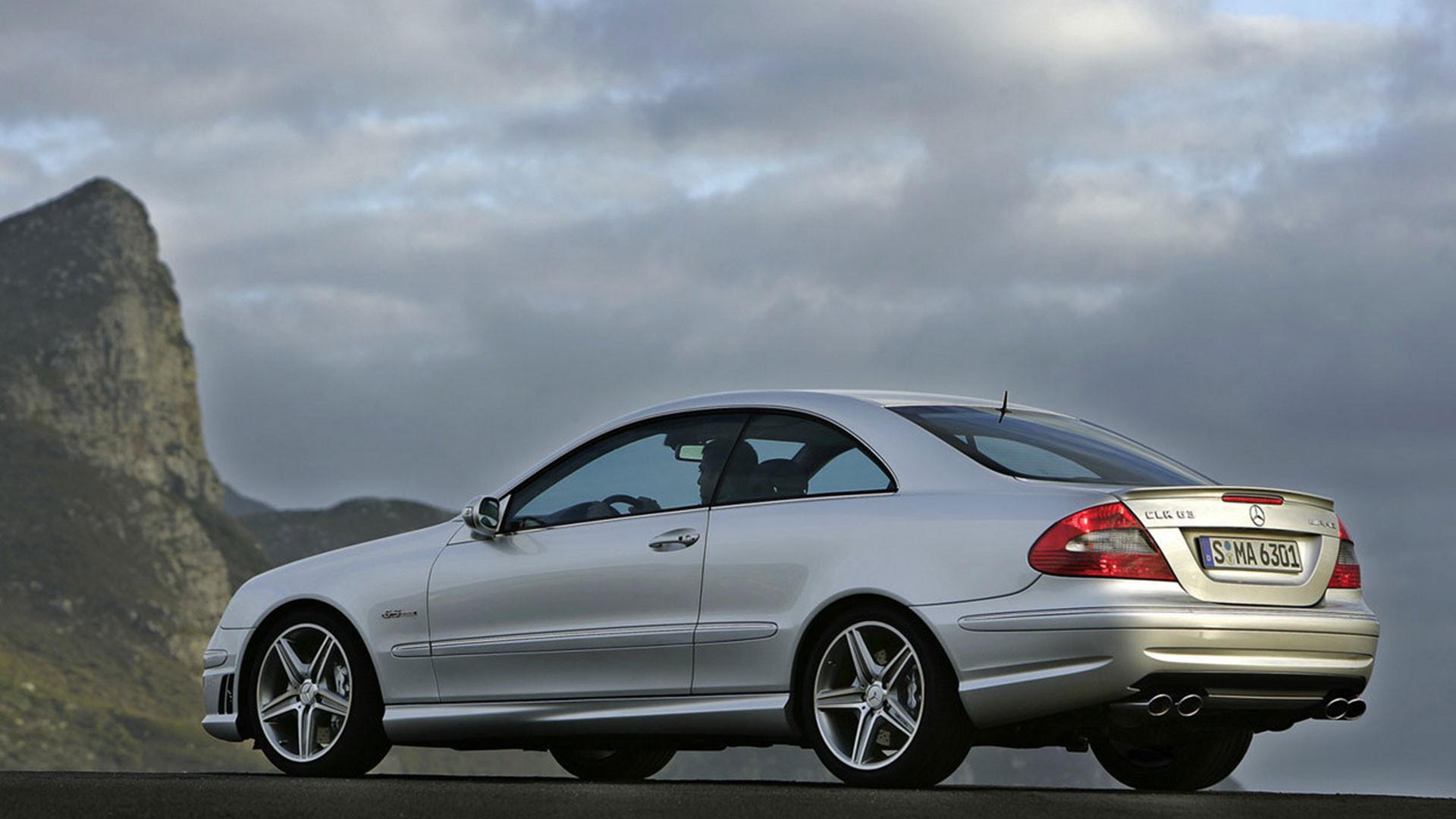 Mercedes-Benz-CLK63-AMG
Mercedes-Benz-CLK63-AMG
12.1. W/A 208 (1998-2002): “CL-Class” for the E-Class
This CLK-chassis can be considered as a “CL-Class” for the E-Class. The W208 entered the US Market as an entry-level model, available with the M112 V6, the M113 V8 in the CLK430, and an AMG-tuned M113 shared with the W210 E55 for the W208 CLK55 AMG.
12.2. W/A 209 (2003-2009): Two-Door Pillarless Model
The W209 changes direction from the spirit of the CLK-chassis, acting as a two-door pillarless model of the W203 C-Class rather than of the E-Class.
12.3. C/A 207 (2010-2017): Coupe Variant of the W212
In another change in structure, the C207 drops the “W” prefix as it is no longer a distinct chassis; this model is the coupe variant of the W212 E-Class and yet is based on the chassis of the W204 C-Class just like the W209 was.
12.4. C/A 238 (2018-Current): Pillarless Design Retained
The C238 returns to its original form; for the first time since its conception with the W208, this coupe is based on the W213 E-Class rather than on a C-Class chassis.
13. SLK-Class Model Codes: Mercedes’ First Small Roadster
13.1. R170 (1998-2004): Innovator for All Convertibles
The R170 SLK-chassis was an innovator for all convertibles. The tiny SLK packed the award-winning Vario roof hardtop and could be had with a supercharged M111 four cylinder or an M112 V6.
13.2. R171 (2005-2011): Expanded Upon the Fun
The R171 SLK-Class expanded upon the fun provided by the original R170. Powered at base level by a 2.5L version of the M272 V6 in the SLK280, the second-generation R171 used a similar folding hard top. Engine options also extended to a 3.0L and 3.5L M272 for the SLK300 and SLK350.
13.3. R172 (2012-2020): Continued the Spirit
The R172 chassis continued the spirit of the SLK-Class, though dropped the name in favor of the tested name “SLC.”
14. SL-Class Model Codes
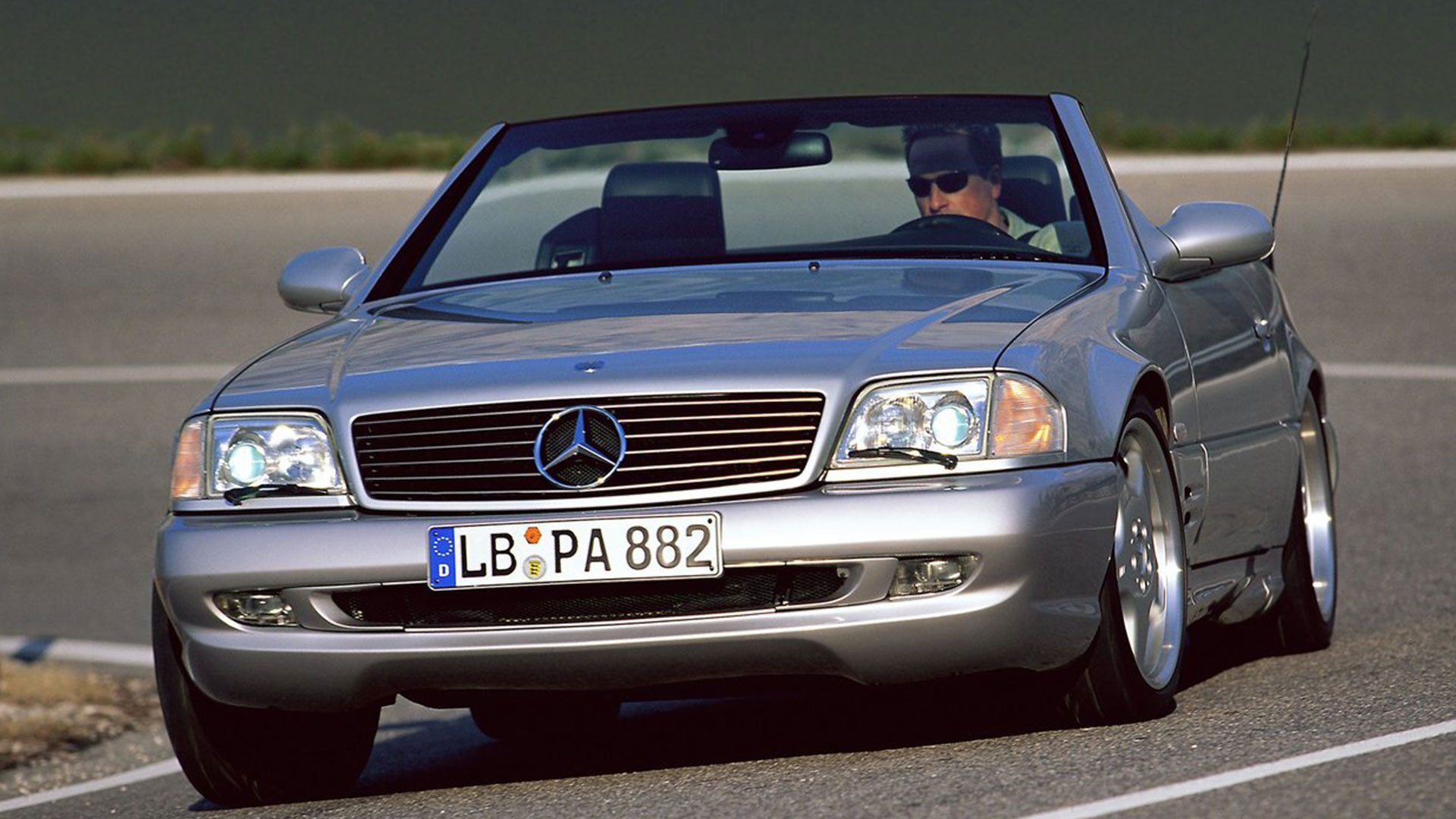 Mercedes-Benz-SL73 AMG
Mercedes-Benz-SL73 AMG
14.1. W113 (1963-1971): The “Pagoda”
This model, known as the “Pagoda,” draws much of its styling and spirit from the legendary 300SL model (W198) that preceded it. Engine options on this model were exclusively inline-sixes.
14.2. R107 (1972-1989): One of the Most Classically-Beautiful
The R107 is one of the most classically-beautiful older benzes today. The R107 was the origin of the C107 chassis, though the two divide at the roof.
14.3. R129 (1990-2002): Builds Largely Off of the Legendary W140
The R129 builds largely off of the legendary W140 S-Class. The R129 was the first SL to have modern rear suspension with a multilink design.
14.4. R230 (2003-2012): A Touchy Subject
The R230-chassis can be a touchy subject with die-hard Mercedes drop-top fans. This model saw an impressive amount of innovation, serving to make it one of the most technologically-advanced convertibles ever made in the early 2000s. The R230 used the controversial AIRMATIC suspension alongside the equally-controversial ABC.
14.5. R231 (2013-2021): Brings the Aging R230 Up to Date
The R231-chassis SL-Class brings the aging R230 up to date, using a host of new materials and technology.
14.6. R232 (2022-Current): Takes a New Approach
The latest SL-Class offering comes in the form of the R232, a unit that bears a distinct resemblance to the stunning AMG GTR coupe.
15. CLA-Class Model Codes
15.1. C117 (2013-2018): Not Entry-Level
The C117-chassis CLA-Class Mercedes is an interesting one, as for the first time in the Silver Arrow brand we see a resposture in which the C-Class is no longer an entry-level model. The tiny CLA-class provides a fuel-efficient and relatively modular platform and driveline.
16. GLA-Class Model Codes
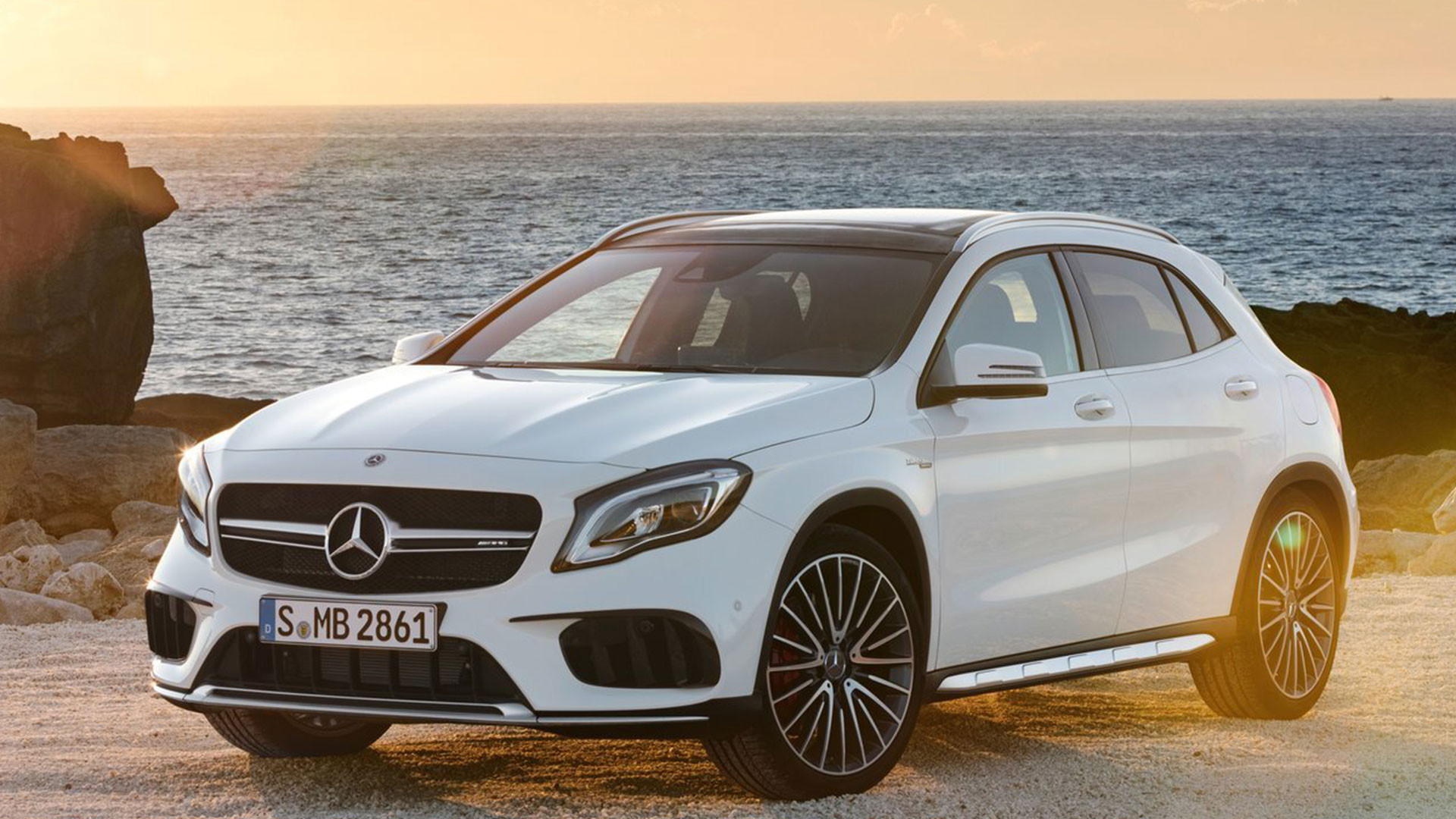 Mercedes-Benz-GLA45-AMG
Mercedes-Benz-GLA45-AMG
16.1. X156 (2015-2018): Effectively a Trial Run
The X156 GLA-Class was effectively a trial run for the non-US Market Mercedes subcompact, paving the way for the later arrival of the A-Class in the United States.
17. MFA2 Platform
New to the Mercedes brand for today’s needs is the introduction of a modular platform, much like Volkswagen-Audi’s recent integration of the “MQB” platform to provide a versatile platform to be repurposed across several different styles of vehicle. In the case of Mercedes, we see a platform referred to as “MFA2,” which fixates on a transverse-mounted and front-biased drivetrain.
- C118: 2019-Current CLA-Class
- X157: 2019-Current GLA-Class
- W177: 2019-Current A-Class
- X247: 2020-Current GLB-Class
18. Need Expert Help With Mercedes Model Codes?
Navigating Mercedes model codes can be complex. AutoExplain.com offers expert remote support to quickly diagnose and fix Mercedes issues.
- Struggling with a complex Mercedes fault code
- Need help diagnosing an electrical problem
- Require assistance with ECU, TCM, BCM, ABS, or AdBlue systems
- Looking for navigation updates or key programming
AutoExplain.com provides:
- Detailed fault code information, causes, and solutions
- Expert guidance on ECU, TCM, BCM, ABS, and AdBlue repairs
- Remote technical support via WhatsApp, email, and online platforms
Don’t waste time struggling with complicated repairs. AutoExplain.com connects you with experienced technicians for efficient solutions.
Contact AutoExplain.com today for fast, reliable technical support.
- Address: 4590 Angus Road, New York, United States
- WhatsApp: +1(936)2896695
- Email: [email protected]
- Website: AutoExplain.com
19. FAQ: Mercedes Model Codes
1. What does the “W” prefix signify in Mercedes model codes?
The “W” prefix typically denotes a short-wheelbase sedan or SUV in the Mercedes-Benz model range.
**2


ABS vs Non ABS: What’s the Difference?
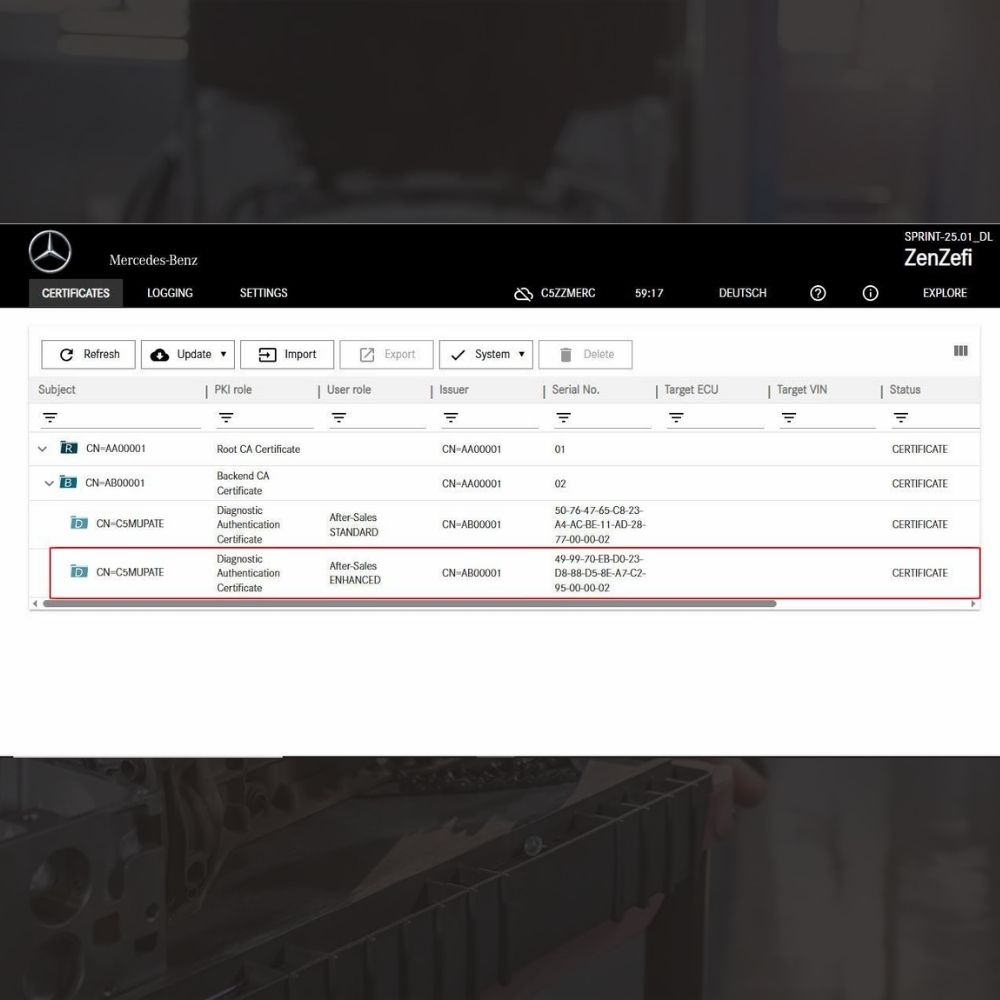
New Mercedes Car Coding Solution with ZenZefi certificate for DTS Monaco 9.02
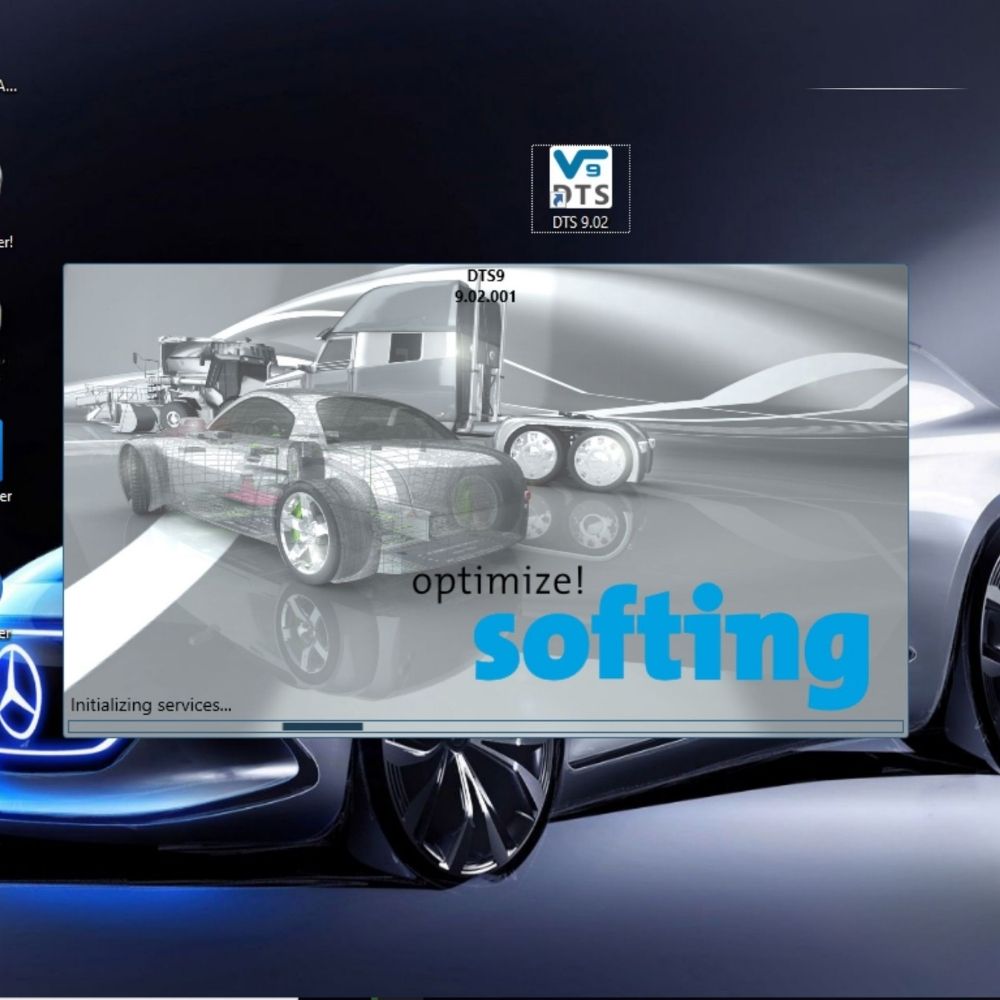
What is DTS Monaco? Key Functions of DTS Monaco Software








